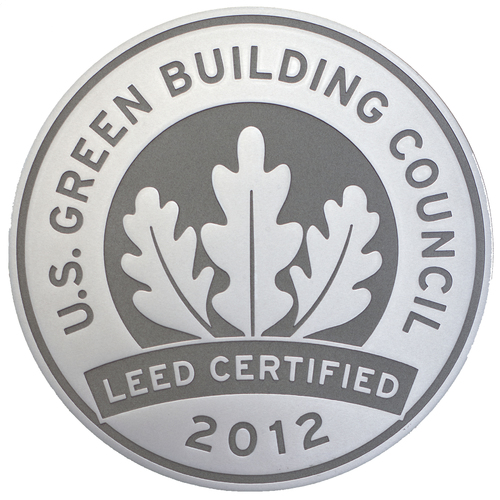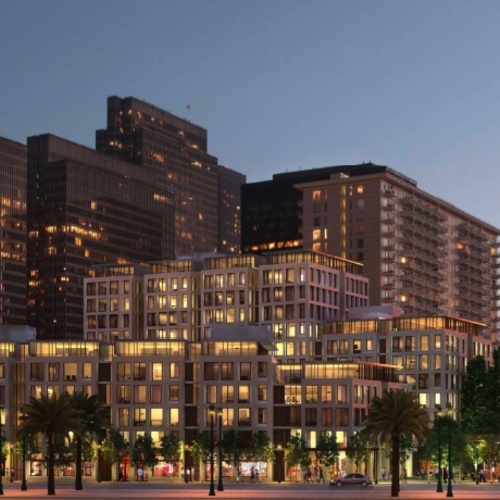A couple stories surfaced over the past few weeks that highlight the disparity between what some observers hope will be achieved when building to achieve LEED certification and how the buildings actually perform.
One item, published this week by Timberjay.com, which serves Minnesota’s North Country, homed in on the energy efficiency performance of the U.S. Forest Service’s new Kawishiwi Ranger District headquarters, in the town of Ely. The building, which serves a portion of Superior National Forest, earned a LEED Silver certification, becoming the first building in the Superior system to achieve the designation.
The project scored green points for its use of recycled and locally manufactured materials (including siding milled near Grand Rapids, and locally quarried rock), and its commuter-friendly location. But when Forest Service engineers analyzed the building’s energy efficiency performance relative to that of the six older headquarters buildings in the Forest Service’s Superior system, Kawishiwi turned out to be the least energy efficient per square foot.
“It has been surprising and a little bit worrisome,” Forest Service engineer Art Johnston told Timberjay. “If we’re building these new facilities and they aren’t that efficient, it takes away the incentive to replace old buildings.”
Part of the problem, Johnston noted, is that it is taking a while to determine how to maximize the efficiency of the building’s mechanical systems. The building’s annual propane usage, for example, has been cut to 12,600 gallons from almost 16,000 gallons, and the overall electrical usage in the facility has been reduced significantly – but not enough to qualify the building as energy efficient, Johnston says.
A conflict between performance requirements and materials?
Stories like this are certainly not new. Kawishiwi Ranger District headquarters was but one of many LEED-certified buildings whose energy efficiency performance has been found wanting – a situation that last year prompted USGBC’s commitment to more rigorous performance-data analysis of the buildings it certifies and to stronger performance requirements to maintain certification.
Another critique of LEED certification standards, published in May by Environment and Human Health, a nonprofit advocacy group based in North Haven, Connecticut, focused not so much on energy efficiency performance but on the possible consequences of occupying a building whose designers embrace airtight construction but also allow use of materials that may contain harmful chemicals. And while GBA contributors and readers have long been aware of the issue, health professionals working with EHH have published a study that focuses on how LEED guidelines may aggravate potentially toxic conditions in a building.
“Although the U.S. Green Building Council’s LEED certification program has effectively encouraged energy efficiency in buildings, tighter buildings often concentrate chemicals released from building materials, cleaning supplies, fuel combustion, pesticides and other hazardous substances,” wrote John Wargo, professor of Risk Analysis and Environmental Policy at Yale University and the lead author of the study.
A doctor on the team?
Wargo added that while many of the thousands of chemicals used in building materials are known to be hazardous, the federal government allows their use to continue. “Although the primary stated purposes of the Green Building Council are to promote both energy efficiency and human health,” he noted, “even the Council’s most prestigious Platinum award does little to ensure that hazardous chemicals are kept out of the certified buildings.”
So the LEED program is getting pressure, from health professionals this time, to dig deeper into its evaluation of not just the provenance and recycling of the materials used in buildings, but the toxic effects they might have in completed structures. The study recommends a LEED scoring system that uses categories (health, energy usage, location, and so on) and a 0-to-100 rating scale. Also recommended: adding health professionals to USGBC’s team of program developers, and requiring government testing of building-material chemicals for toxicity and their potential effects on humans in buildings.
Scot Horst, senior vice president for LEED, told tech website Fast Company that “there’s validity in what these people are saying, and we want to work with them to improve LEED.” But, he added, “LEED could say there should be no chemicals in any building and no energy used and no water and every building should give back water and energy. We could do all that, and no one would use the rating system. We can only take the market as far as it’s willing to go.”
Weekly Newsletter
Get building science and energy efficiency advice, plus special offers, in your inbox.















One Comment
how LEED is sometimes executed
I worked for about a year at an architecture firm that took on the role of a ‘LEED consultant’ which meant we administered and facilitated the submittal documentation of for many projects applying for LEED certification which the firm I worked at had no part in the design. We were brought on as ‘consultants’ typically as the project was going into construction.
I worked for about a year at an architecture firm that took on the role of a ‘LEED consultant’ in order to sustain the business during the recession. ‘Consultant’ primarily meant we administered and facilitated the submittal documentation of for many projects applying for LEED certification which the firm I worked at had no part in the design. We were brought on as ‘consultants’ typically as the project was going into construction. Coordination and administration in a LEED project is a valuable thing. However sometimes ‘consultants’ are asked to do clean up duty for team members who don’t really engage or follow the intentions of the LEED points they are responsible for.
Based on this experience I am skeptical of the claims to higher environmental responsibility that supposedly comes with LEED certification. While I think the LEED rating system can contribute to making a project ‘better than it was going to be without using LEED’, my experience has been that projects were designs first according to what the firms were familiar with and then checked later by consultants whether they achieved the intended points or not. If the projects did not appear to achieve some intended points it was usually at a point in building process in which changes could not be made (changes that may have not of been included because of cost in the first place.) At this point there is the possibility of revisiting the submittal documentation to see if things ‘were figured differently’ whether it would show compliance or not. I have not been involved in or witnessed explicit instances of this but I was involved in enough ‘rechecking’ the numbers to want to quit my work as a LEED ‘consultant’.
On more than a couple of projects, one a very large international project with consultants from well known engineering firms, I was giving the task of checking the energy calculations for the important multi-point Energy and Atmosphere credit. I discovered important omissions and would have to assist the people responsible (or in one instance another intermediary consultant) in how to complete the pre-formatted calculation template just to get a calculated result. My ‘consultant’ expertise was based only had the LEED rating system guideline book and associated USGBC web documents as reference material.
I lost faith that the engineers for these projects had put any serious thought into what they were doing let alone what they could achieve in terms of real energy efficiency.
I write anonymously because I don’t have the facts or both sides of the story to back up this skepticism in the public realm so I don’t want to implicate any specific projects. However my work with the pre-formatted templates that the USGBC supplies for the Energy and Atmosphere calculations in particular leads me to believe that it doesn’t take much to adjust the numbers to get more favorable results and therefore more LEED points. All the USGBC reviewers can do is check documentation for consistency (which maybe is a sufficient measure to stop most dishonest activity but maybe not).
I have witnessed over exaggerations of ‘green’ achievement in projects. We would be naive to think in a competitive market people aren’t making exaggerated claims all the time.
While the USGBC has focused on market share (which makes sense if not enough projects submit for a certification what’s the point) I am expecting that more and more reports of underperformance will come to light, clients might sue and the USGBC will have to legally address the integrity of its certification levels. I don’t mean to blame the USGBC. I believe there are many intelligent people working within that organization to improve our built environment. We would be naive however to believe there isn’t a lot of activity in the market trying to take advantage of a rating system that has little to no real enforcement of its claims.
On more than a couple of projects, one a very larger international project with consultants from well known engineering firms, I was giving the task of checking the energy calculations for the important multi-point Energy and Atmosphere credit. My background is architecture and not engineering though I started in engineering and am comfortable with numbers. I discovered important omissions and would have to assist the people responsible (or in one instance another intermediary consultant) in how to complete the pre-formatted calculation template just to get a result. I was the so called ‘consultant’ and my knowledge was solely based on the LEED rating system guideline book and associated USGBC web documents. I lost faith that the engineers for these projects had put any serious thought into what they were doing let alone what they could achieve in terms of real energy efficiency.
I write anonymously because I don’t have the facts or both sides of the story to back up this skepticism in the public realm so I don’t want to implicate any specific projects. However my work with the pre-formatted templates that the USGBC supplies for the Energy and Atmosphere calculations in particular leads me to believe that it doesn’t take much to adjust the numbers to get more favorable results and therefore more LEED points. All the USGBC reviewers can do is check documentation for consistency (which maybe is a sufficient measure to stop some dishonest activity).
I have witnessed a lot of exaggeration of ‘green’ achievement in projects. We would be naive to think in a competitive market people aren’t making exaggerated claims all the time.
While the USGBC has focused on market share (which makes sense if not enough projects submit for a certification what’s the point) I am expecting that more and more reports of underperformance will come to light, clients might sue and the USGBC will have to legally address the integrity of its certification levels. I don’t mean to blame the USGBC. I believe there are many intelligent people working within that organization to improve our built environment. We would be naive however to believe there isn’t a lot of activity in the market trying to take advantage of a rating system that has little to no real enforcement of its claims.
Log in or create an account to post a comment.
Sign up Log in